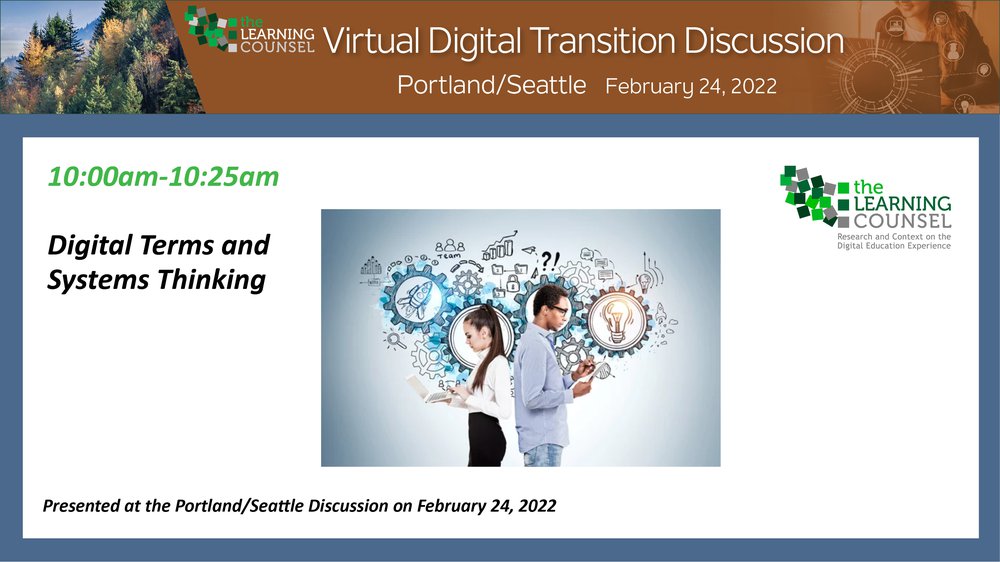By Definition: Systems thinking is a management discipline that first observes discrete functions and interactions between components. In education, that would be the interactions among teachers, learners, administrators, digital content and learning goals. Systems Thinking then uses that data to derive a useful construct, a system, that creates efficiency and utility for all. Sometimes this system is multiple systems of multiple functions. This averts considerable confusion, overlap, and inefficiency at the software and content levels. Most tech transition constructs by schools are piecemeal documents and a patchwork of apps. Systems thinking was defined in Systems Thinking Basics by authors Virginia Anderson and Lauren Johnson as a “big-picture view of the whole.”
In this workshop, Chris McMurray, Vice President of EduJedi Leadership at the Learning Counsel, weighs in on the benefits of systems thinking in the school district. According to McMurray, “As we all know in complex change, having a common vocabulary and definition is critical. And systems thinking is one of those things that gets Bandied about a lot, it's sort of like personalized learning. People use it indiscriminately and with broad definition. Systems thinking is a management discipline, right? It talks about discrete functions. It talks about interactions between components and so in terms of first steps forward, this is definitely one of those first steps.”
Drew Hinds, Technology Director at Corvallis School District said, “I like the idea of finding incremental, like in our zone of proximal development, our zone of growth; I think that some people can start with secondary, because it's already systems thinking, you have to put kids into slots and think about a master schedule and all these different things. TEALS has an interesting model with computer science. They'll deliver you a computer science teacher that teaches right alongside your computer science teacher that doesn't have some of the technical expertise that that person that's joining offers. So that's a way to breach the conversation within an already functional system that has some of the elements that you want to have conversations about, and then insert that teacher by zoom and see where in the next conversation goes. But it's a slow-moving train for sure.”
Steve Langsford, CIO at the Beaverton School District added, “I think people will start with an end result, you know, ‘I need X,’ and they don't think about the implications and relationships, and that plays out in user frustration. And not being able to make the connections between what is happening in a classroom to the classroom next door, to the school, and then to the group of schools that comprises the school system. This is probably something that we continue to struggle with and it's great to be able to think about how to get people on the same page. I think you almost have to back up and say, ‘how do you get people to understand they're not on the same page?’ That would be where I would start before even having the conversation about getting on the same page.”
There is a special kind of wisdom gained from working in the education business, and it comes with its own unique set of answers. Enjoy this Systems Thinking workshop for answers that are unique to you, and you’ll have fresh ammunition to battle your most cerebral problems.










